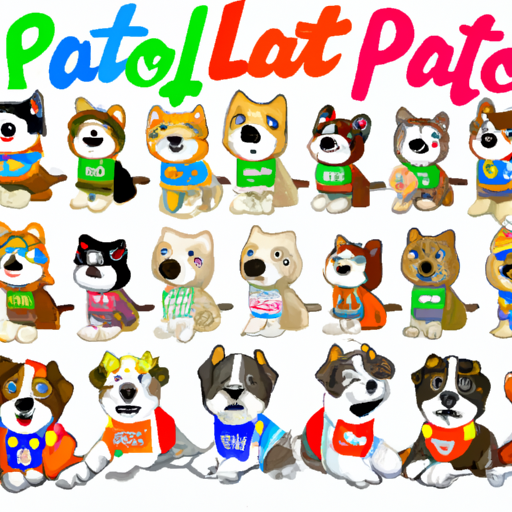As a caregiver, you’re likely familiar with the animated TV show Paw Patrol. It’s a hit among children, and for good reason. The show is centered around a group of heroic dogs, each with their own unique skills and personalities. In this article, we’ll delve into the names and characteristics of these beloved canine characters.
Who Are The Main Characters?
In the world of Paw Patrol, a young boy named Ryder leads a group of dogs on various rescue missions. Each dog has a unique role and a set of skills that contribute to the team’s overall success. Let’s meet the main characters:
- Ryder: The human leader of the Paw Patrol team. He’s responsible, brave, and always ready to help.
- Chase: The police pup. He’s mature, serious, and athletic.
- Marshall: The fire-fighting dalmatian. He’s often clumsy but always courageous.
- Skye: The high-flying Cockapoo. She’s smart, quick, and loves to fly.
- Rubble: The construction bulldog. He’s strong, caring, and loves to dig.
- Rocky: The recycling mixed breed. He’s resourceful, creative, and hates to see anything go to waste.
- Zuma: The water-loving Labrador retriever. He’s laid-back, funny, and loves to surf.
- Everest: The snowy mountain husky. She’s enthusiastic, fearless, and loves the snow.
What Are Their Unique Skills?
Each member of the Paw Patrol team has a specific set of skills and a dedicated vehicle. This variety of skills enables them to tackle any challenge they encounter.
| Dog | Skill | Vehicle |
|---|---|---|
| Chase | Police duties, traffic control | Police Cruiser |
| Marshall | Fire-fighting, medical aid | Fire Truck |
| Skye | Air rescues | Helicopter |
| Rubble | Construction, digging | Bulldozer |
| Rocky | Recycling, fixing things | Recycling Truck |
| Zuma | Water rescues | Hovercraft |
| Everest | Snow/mountain rescues | Snowmobile |
How Do They Reflect Positive Values?
The Paw Patrol team isn’t just about rescuing. They also teach valuable life lessons and positive values to their young audience. Here’s how:
- Teamwork: The pups always work together to accomplish their missions. They rely on each other’s strengths and help each other overcome their weaknesses.
- Responsibility: Each pup has a specific role and they take their duties seriously. They show us that every job is important, no matter how big or small.
- Kindness and Empathy: The pups always show kindness and empathy towards others. They’re always ready to help those in need, regardless of the situation.
- Bravery and Courage: The pups face their fears and take on challenges bravely. They remind us that it’s okay to be scared, but it’s important to try our best and never give up.
How Can You Engage Your Child With Paw Patrol?
As a caregiver, you can use Paw Patrol as a tool to engage your child in constructive and educational activities. Here are some suggestions:
- Discuss the episodes: After watching an episode, ask your child what they learned from it. Discuss the values and lessons portrayed in the episode.
- Role-play: Encourage your child to role-play their favorite Paw Patrol character. This can help them develop empathy and understand the importance of different roles in a community.
- Crafts and games: Use Paw Patrol-themed crafts and games to develop your child’s creativity and problem-solving skills.
FAQ
Q: Who is the leader of the Paw Patrol team?
A: The human boy Ryder is the leader of the Paw Patrol team.
Q: What breed is Skye?
A: Skye is a Cockapoo, a mixed breed of a Cocker Spaniel and a Poodle.
Q: What is Marshall’s role in the team?
A: Marshall is the fire-fighting dog of the team. He also provides medical aid.
Q: Who is the newest member of the Paw Patrol team?
A: The newest member is Everest, the snowy mountain husky.
Q: What are some values that Paw Patrol teaches?
A: Paw Patrol teaches many values such as teamwork, responsibility, kindness, empathy, bravery, and courage.
Remember, every pup has a unique role and contributes in their own way. Just like the characters of Paw Patrol, each child is special and has their own set of skills and talents. As caregivers, it’s our role to guide and encourage them to be their best selves.



